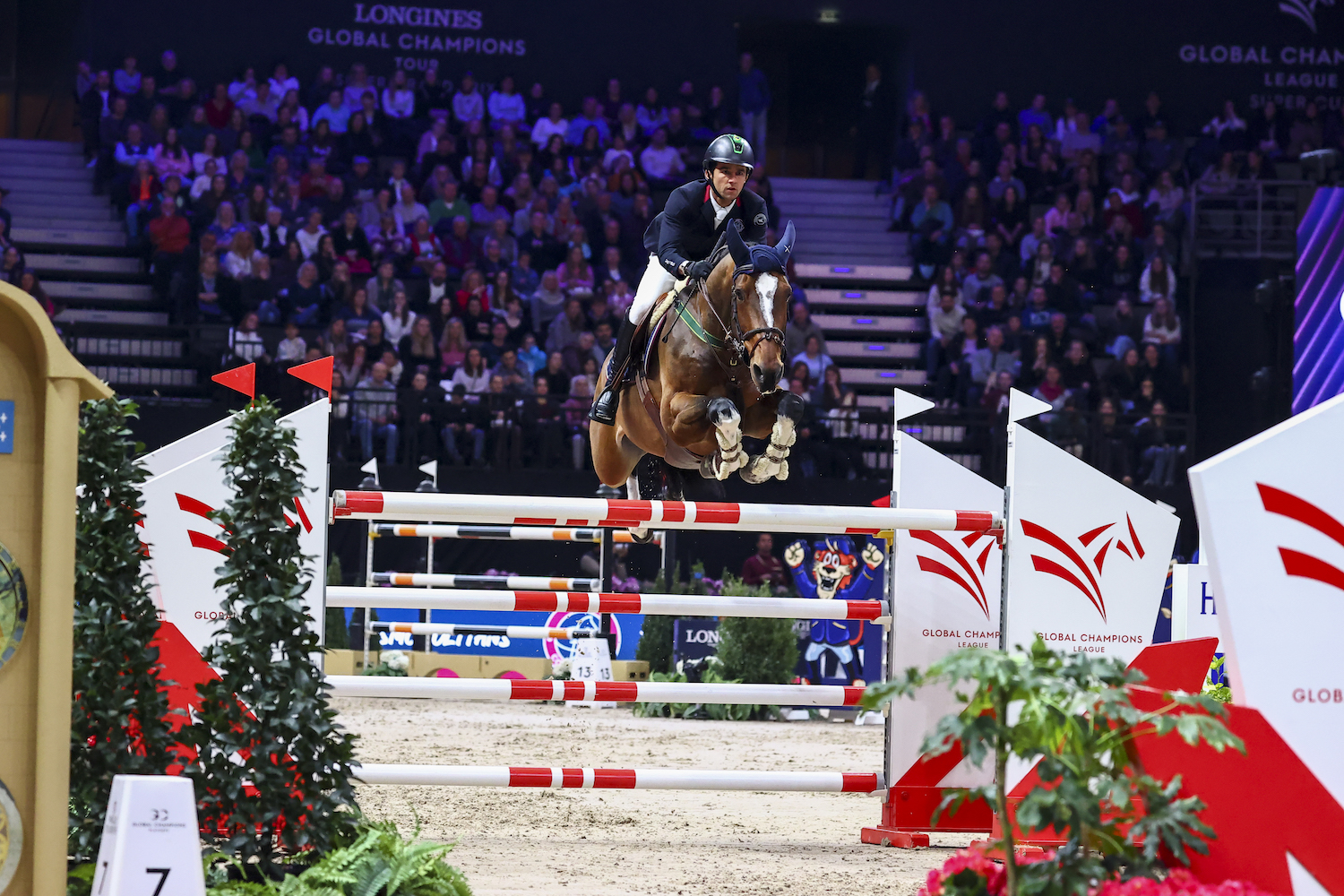My Connemara cross mare JEF Anna Rose and I finished our 2017 show season the last weekend of August at a close to home recognized USDF/USEF show, held at Longfellow Farm in Nottingham, NH. It was a beautiful afternoon and the show organizers really worked hard to try to make the show a special experience for competitors. We each received a goody bag with magazines, lip balm, a box of sugar cubes and a gift certificate to a web site I cannot afford. There were real flowers in the port a potties. They had a mini trade fair and fresh food. Tons of my friends were there riding, coaching and grooming, and the whole thing felt a little bit like an end of summer picnic where we were all trying to absorb the late season sun and fun.
As I was setting up my equipment I listened to the women at the trailer next to mine go through their own preparations. At first, I wasn’t sure who was riding and who was coaching, but ultimately determined there were two rookie riders doing their first Opportunity classes, a conscientious horse owner, and one extremely patient trainer. The riders’ nervous energy was palpable as they struggled to pull up their new full seats, bemoaned the lack of pockets in same for sugar cubes, and valiantly figured out how to tack up their mounts while still remaining clean. A gentleman wearing a camera stood nearby, wisely far enough back from the action so as to not get caught up in it but close enough by to be showing support. When it came time to mount, neither could manage to do so off the top of a 5 gallon pail, the only mounting block available. So their trainer offered each of them a leg up.
Compared to these two, who as it turned out were riding in my ring, directly after me, I was the epitome of calm. I methodically went through my usual preparations, putting on the white base layer, the choker which fits a little too tightly, the hairnet which always leaves an indent on my forehead secured under my gray velvet helmet. My hand me down Pikeur jacket was an expensive purchase for its original owner; I acquired it for just $30 and spent an additional $35 spent to tailor it, though it still doesn’t feel like it fits me right. It is just a bit out of style and the collar has faded in the sun, which I’m sure no one notices but me. I felt no nerves, no worries. I tacked up Anna, mounted off the top of my own upturned 5 gallon pail, and headed to the warm up.
Anna and I performed Third Level Test 1 for the fourth time this season, and got yet another 58%. I somehow mistimed my warm up, leaving me a bit shortchanged in terms of the preparation, but at the end of the day I really don’t think it would have mattered all that much. While our performances have progressively improved, the scores have not. We have been rocking those 50’s (it sounds like a dance party, which would be a whole lot more fun): 58, 55, 59, 58. Close but not quite there.
I do appreciate the comments from the judges. Judges have a challenging job; they must sit for hours, running “tapes” in their mind which include the purpose of the level and the expectations of a movement at that level, and then they translate these ideals promptly into a succinct statement which justifies their assigned score. I have sat and observed judges and scribed. I have graduated from the USDF “L” learner judge’s program. I have spent hours judging at schooling shows, watching many, many tests in which there was very little dressage going on, trying to figure out how to offer feedback which will be perceived as helpful but not overly negative. Judges are usually really trying to help the riders they are watching.

But that day at Longfellow, as I held my yellow sheet on which the judge noted “capable horse who is obedient in changes and must be rounder and better on bit and connected”, I just felt defeated. Like, what is the point of this? Dressage is such a dumb sport, to get all dressed up in these ridiculous uncomfortable penguin suits and go to shows where they put flowers in the port a potties and then we go and ride these redundant patterns, over and over again, hoping that for the FIVE MINUTES the judge sees our horse, we can meet some mystical expectation of “dressageyness”.
Why am I wasting my time and energy doing this? Why did I spend an hour to bathe and braid my horse and load equipment into my trailer and then ship down here? For a 58%?
I have been teaching riding since I was eighteen years old, over half my life. I sure thought I knew everything when I first started, and it wasn’t until I was in my thirties that I began to understand that I didn’t even know what I didn’t know. I have at least five former students to whom I taught the absolute basics of how to put a horse on the bit, which have now ridden to Grand Prix and finished their USDF Gold Medals. There are probably another five who are riding at Prix St. George or Intermediare I. Meanwhile, I am over here still splashing around in the dressage kiddie pool, unable to get my swimmies off.

In the Chronicle of the Horse’s August 7 issue, there was a great article about an amateur rider named Elizabeth O’Connor. This spring, she finished her USDF Gold Medal riding a one-eyed off-track-thoroughbred which she trained herself. To say that the pair had overcome adversity to achieve this result is an understatement. It is a story meant to inspire, to remind readers that one doesn’t have to have the fancy warmblood and that with hard work, grit and determination, one can get to the big goal.
But what if that isn’t really true, most of the time? What if hard work and determination isn’t enough? When do you decide that maybe the judge’s comments are correct, and it is time to pack up and go home before the Dressage Police show up and throw you out?
I was still feeling pretty defeated when I brought Anna to the beautiful Chesley Brook Stables in Dover, NH, to ride with Verne Batchelder on Labor Day. I was tired emotionally and physically, having just ridden the two day 60 mile ride at GMHA with my Thoroughbred, Lee, finishing in the remnants of Hurricane Harvey on Sunday. Verne quickly picked up on the fact that I seemed…down.
A former classroom educator and lifelong equestrian, Verne is probably the best coach I have ever worked with in terms of getting the maximum performance out of Anna. He has seen me ride different horses, and he knows both me and this horse well. As professionals, there are certainly times when we need a kick in the backside but there are also times when we need a boost. Verne reminded me that sometimes the biggest complement that a teacher receives is when their student exceeds them. He also pointed out that I am doing Third Level on a somewhat lazy horse whose genetics do not automatically set her up for the job. Anna is trained. 58% is close. We are not in the 40’s.
“We are not going to become the masters of Third Level,” proclaimed Verne. “We are going to keep going. We are going to get this pony to FEI.”
I don’t know if we will or we won’t, but that is almost irrelevant. Everything Verne said was just what I needed to hear. I have made a conscious choice to own my own horses, to do my own training, and to commit to the process and animals I have. Giving up when you hit the hard spots can sometimes be the right choice, but at other times you have to just keep plugging away with the faith that with enough persistence, even the roughest of surfaces wear smooth. If my goal was simply to get to Grand Prix, or to finish a USDF Silver or Gold Medal, I could do that….but the fastest route would be a totally different path than the one I have taken. I haven’t chosen to lease a schoolmaster, or to buy a big mover, or even to devote my training energy and tack time 100% to dressage. And for these reasons, I have become (in my opinion) a more robust equestrian.
When I returned to my trailer at the Longfellow show, I was untacking and unbraiding Anna, who hungrily mowed down the grass of the field we were parked in. My neighbors returned, elated, victorious; they had finished their first ever dressage tests at a rated show. The horse owner saw me and said, “Wow, I saw your test, and your horse was amazing! It was such a great ride!”
“Thanks,” I smiled, knowing even without having seen the results that it was probably just another 58%.
“We actually rode right after you in the same ring,” she continued, flushed with excitement. “And when we saw you cantering on the diagonal, and then doing one of those changes, we totally panicked, because that wasn’t the test we knew! Your horse is just beautiful.”
I guess I didn’t really hear her then, but in retrospect I appreciate the comments more now. Why are we doing this silly sport, this art, called dressage? It can’t be just for the score…because the score only represents one moment in time. You have to do it for the day to day victories, and for the incremental improvements which show that your horse is progressing. My horse does flying changes. And she half passes. And she is starting to understand the double bridle. We may be working on many elements still, but there are many others which she does well. She received 7’s on her walk pirouettes; Verne thinks they should be 8’s. My horse is a Third Level horse.
So while other people may be diving into the deep end, don’t mind me. I’ll just be over here in the shallow end, gradually creeping my way into the deeper water. A little better than marginal, but not quite yet sufficient.

About the Author
Christina Keim is a self diagnosed equine addict who has been around or on top of horses for a nearly uninterrupted span of over thirty years, when she was first given riding lessons “just for the summer.” She has enjoyed and experienced many disciplines including hunters, equitation, jumpers, dressage, eventing, Pony Club and most recently competitive trail riding. Christina is based at her Cold Moon Farm in Rochester, NH, and holds an M. Ed from the University of New Hampshire.


 October 11, 2017
October 11, 2017 
























